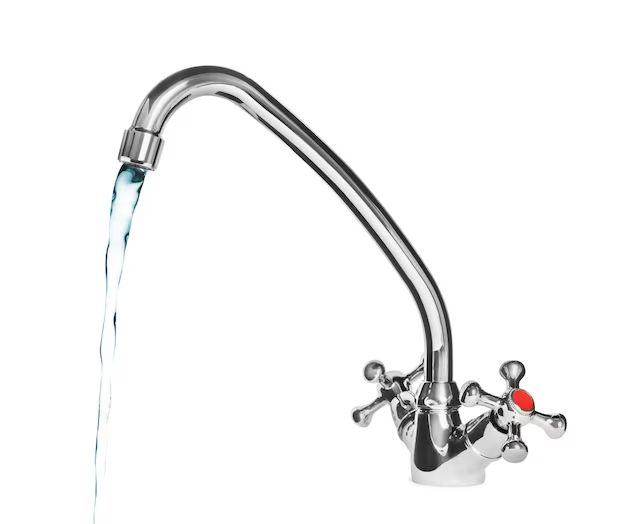A self draining hose bib, also known as a frost-free hose bib, is a type of outdoor faucet designed to prevent water from freezing inside the pipe during cold weather. Unlike a standard hose bib, a self draining model has a long stem that extends through the building’s wall and attaches to a valve inside. This allows any water remaining in the stem and faucet to drain out after the water supply is shut off, preventing burst pipes due to ice expansion.
Page Contents
How does a self draining hose bib work?
A self draining hose bib consists of three main components:
- A front faucet and handle outside the building
- A long stem pipe that passes through the building wall
- An interior valve connected to the water supply line
When the faucet handle is turned on, the valve opens and allows water to flow through the stem and out the front spout. When the water is shut off, the valve closes. Any water remaining in the stem and exterior faucet is able to drain out automatically through a small hole at the faucet’s base, preventing freezing.
The key advantage of this design is that the valve and water supply line remain safely inside the warm building, while only the stem and front faucet are exposed to freezing temperatures. This allows the hose bib to be used year-round without worrying about burst pipes.
Types of self draining hose bibs
There are two main types of self draining hose bibs:
Automatic drain models
Automatic drain hose bibs rely solely on gravity to drain water out of the exterior faucet and stem after use. When the water is shut off, any leftover water simply drains out through a hole at the faucet’s base. This is the most common and affordable type of self draining hose bib.
Blow-out models
Blow-out hose bibs utilize water pressure to actively push any remaining water out of the stem. A backflow preventer is used to isolate a small amount of water after the main valve closes. This water is forced backward through the stem, pushing the remaining water out through the faucet. Blow-out models ensure more thorough drainage but cost more than gravity drain types.
Benefits of using a self draining hose bib
Installing self draining hose bibs provides several important benefits:
- Prevents burst pipes and water damage from freezing
- Allows exterior water access year-round in cold climates
- Drains automatically – no need to manually disconnect hoses
- Less risk of pipes freezing if accidentally left on
- Backflow prevention models available for added protection
- Saves money on repairs compared to freezing damage
For homes and buildings in areas prone to sub-freezing winter temperatures, self draining hose bibs are highly recommended. They are more frost resistant than standard hose bibs and can help avoid costly plumbing repairs.
installation of self draining hose bibs
Proper installation is important for self draining hose bibs to function correctly. Here are some key steps for installing them:
1. Turn off the water supply
Shut off the main water valve for the house before beginning. This prevents water from leaking out during the hose bib installation.
2. Drill the hole through the wall
Drill a hole through the exterior wall at the desired faucet location. The hole should be angled downward slightly to allow drainage. Make sure the hole is large enough to accommodate the stem.
3. Secure the interior assembly
Attach the interior valve assembly securely to a pipe inside the house. Use elbow joints if needed to angle the valve toward the hole.
4. Feed the stem through
Feed the stem through the drilled hole from outdoors. Ensure the washer is in place where the stem meets the interior valve.
5. Attach the exterior faucet
Attach the exterior faucet piece to the stem protruding outside. Usually this just screws or presses on.
6. Caulk around the stem
Caulk around the stem where it exits the building. This seals any gaps against moisture or air leakage.
7. Connect to water supply
Finally, connect the valve’s water inlet to the interior water supply line. Slowly turn the water back on and test for leaks.
Maintenance tips
To keep a self draining hose bib working properly, follow these maintenance practices:
- Inspect washers and O-rings annually – replace if worn
- Make sure the exterior faucet drains fully after use
- Clear any clogged drain holes at the faucet base
- Check for cracks or damage to the stem and caulk if found
- Test operation before winter and drain all hoses
- Consider installing insulation around the stem
- Disconnect and drain the hose bib for winter if possible
With proper maintenance, most self draining hose bib models will provide many years of reliable, freeze-free outdoor water access.
Conclusion
Self draining hose bibs provide a convenient way to access outdoor water year-round, even in freezing climates. Their frost-free design allows any remaining water to drain out of the faucet and stem automatically after use, preventing burst pipes. While slightly more expensive than standard hose bibs, the self draining models are worth the investment for reliable winter water access and reduced risk of water damage. Following the proper installation and maintenance best practices will ensure these frost-free faucets function smoothly for many years.
